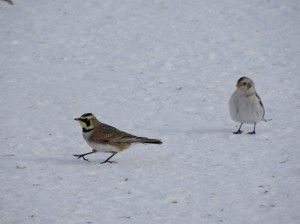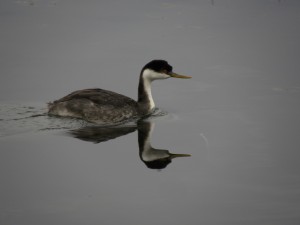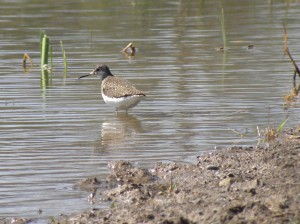May 2 2012. Sometimes it’s hard to separate the Bird of the Day from the Event of the Day. The Event is unquestionably the surge of neo-tropical spring migrants, the ones we’ve been anticipating for so long, the ones that have filled the overnight radar screens with blue shapes.
Today at the bird observatory the list of exciting, newly arriving, brightly coloured, eye-popping birds was long. There were: Yellow-rumped, Cape May, Palm, Black & White, Yellow, Chestnut-sided and Blue-winged Warblers; Baltimore Orioles, Rusty Blackbirds, Chimney Swifts, Gray Catbirds, House Wrens and Warbling Vireos too. Birds that on other days would be minor sensations like: Bald Eagle, White-throated Sparrow and Caspian Terns went almost unnoticed. And the party’s only just begun.
I spent ages trying to get a decent photo of a Palm Warbler as it worked its way through the bottom of a grape tangle, then another one came zooming in and the two of them either squared off or flirted.
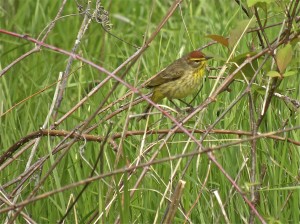
A Black-throated Green Warbler was nearby picking insects from the outer tips and flowers of a Sugar Maple and singing it’s signature ‘Zee-zee-zee-zee-ZOO-zee” song.
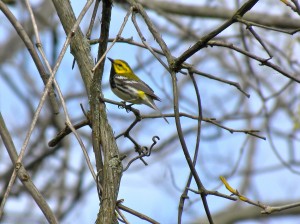
They were among what seemed like the world’s population of Yellow-rumped Warblers who were making their way north and staying to the river for a while; again I tried for a good photograph, but they just won’t stay still.
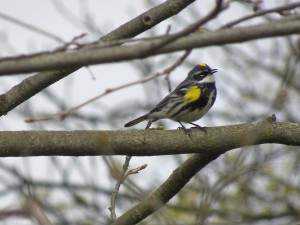
Exciting and challenging as these showstoppers may be, I got my shot of adrenaline from hearing the first Warbling Vireo of the year. Warbling Vireos will never win a Best-Dressed competition; they’re basically a drab greenish-olive bird of the treetops. But they’re my Bird of the Day because they evoke a family holiday of about 30 years ago at a cottage on the shore of Lake Erie.
It was hot and humid and the setting was one of ice cream, hot dogs, swimming and sun-tan lotion. Over the days I became aware of a background throw-away song coming from high in the fragrant Cottonwoods. It followed us wherever we went, it was Warbling Vireos keeping watch over their territories. The song is hard to describe, it’s a ramble of flat toned notes that, although a little musical, dwindles to nothing much. Pete Dunne in his wonderful book describes the general tone and cadence as “..like a happy drunk making a conversational point at a party.” And the party’s only just begun.
